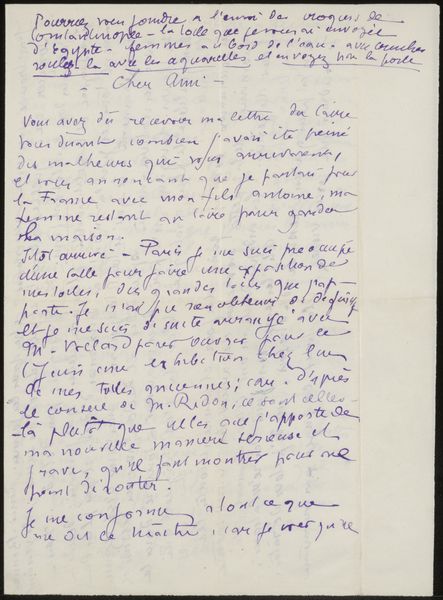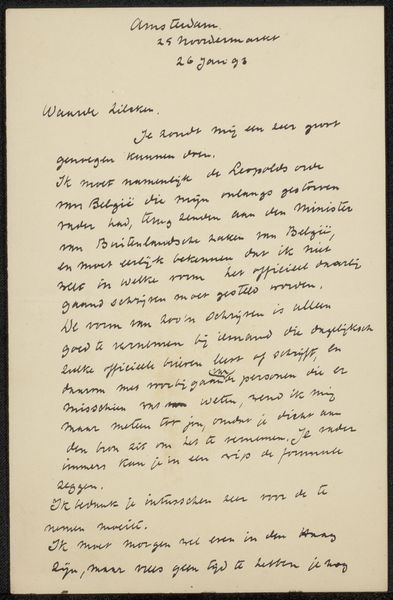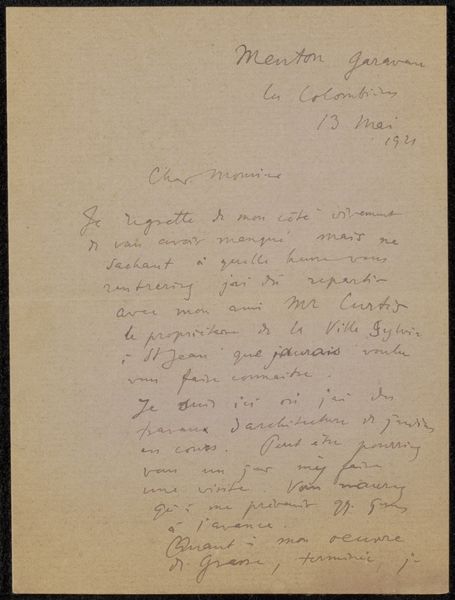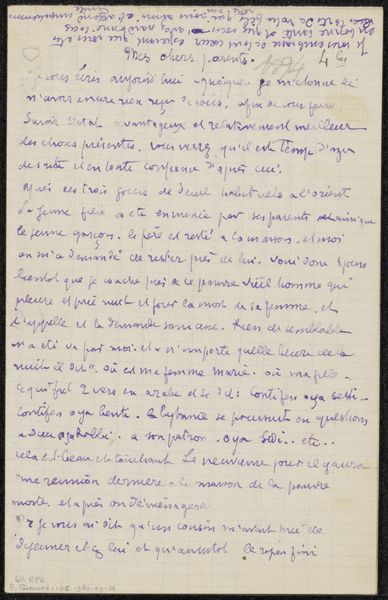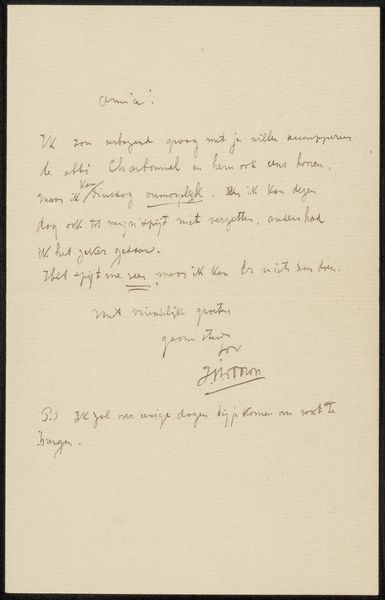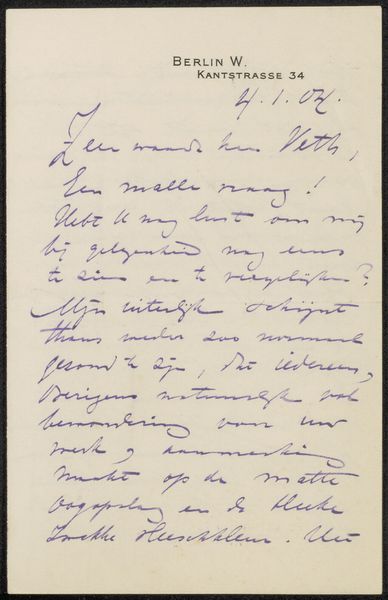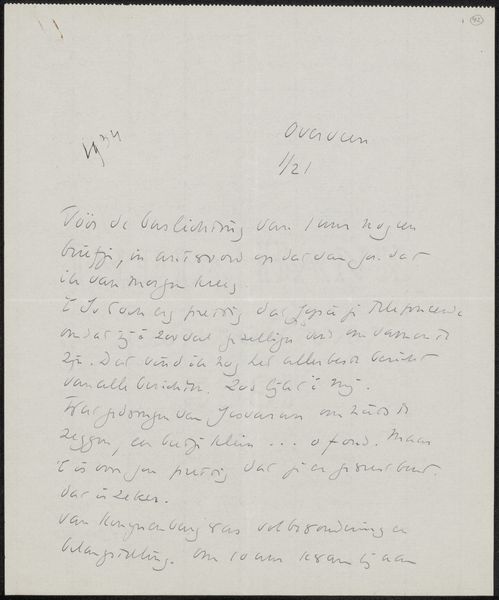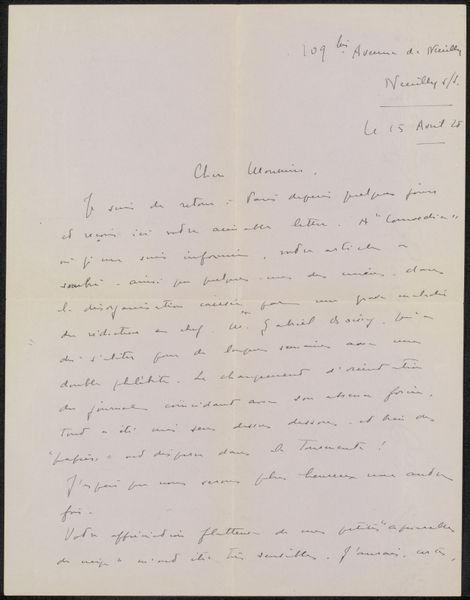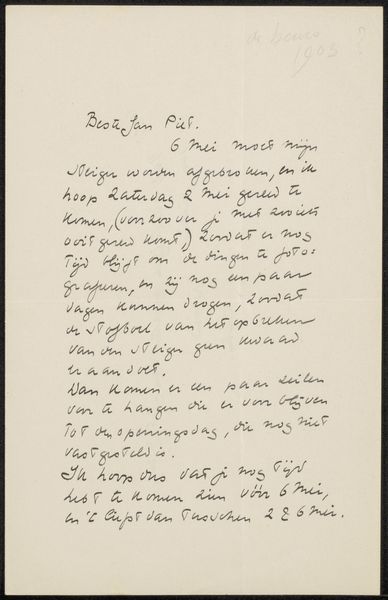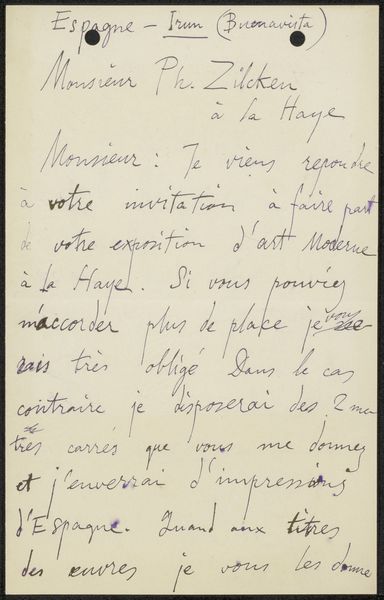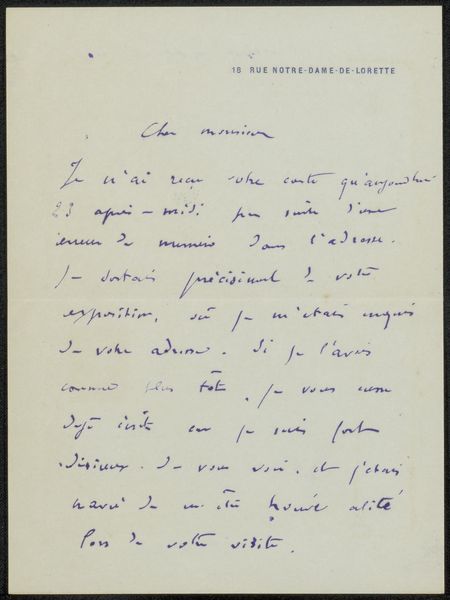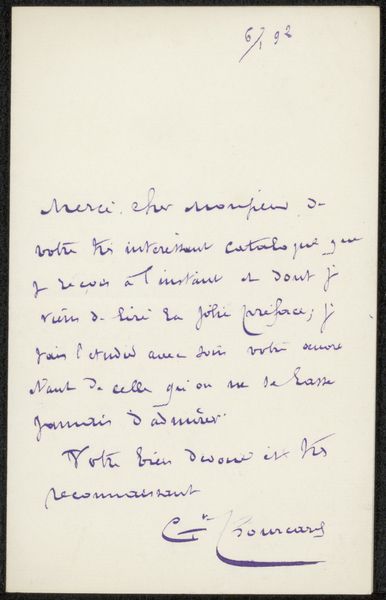
drawing, paper, ink, pen
#
portrait
#
drawing
#
hand-lettering
#
hand drawn type
#
hand lettering
#
paper
#
personal sketchbook
#
ink
#
hand-drawn typeface
#
fading type
#
ink colored
#
pen work
#
sketchbook drawing
#
pen
#
sketchbook art
Copyright: Rijks Museum: Open Domain
Curator: Today, we're looking at "Brief aan Philip Zilcken," possibly created around 1899 by Gustave Bourcard. It’s an ink drawing on paper. Editor: It has an ethereal, intimate quality, as if eavesdropping on a private correspondence from another time. The varying ink tones contribute to this atmosphere. Curator: Absolutely. The formal composition, especially the use of line and space, directs the eye down the page, almost mimicking the act of reading. The handwritten text itself takes on the properties of graphic art. Note the contrasting weight and flow of the script, dividing the sheet. Editor: Let’s talk more about that handwritten aspect. The paper and ink, those tangible elements, are so crucial. The creation of each letter becomes a physical act, a labor of careful penmanship. This suggests a slow, considered pace of production, contrasting with today’s digital communication. Curator: I agree, and the form reinforces its function. Look closely; one recognizes the careful construction of each glyph, with consistent ascenders and descenders shaping its textural density. Also, the slight fading in some parts lends it an authentic feeling of time passing, underscoring the ephemeral nature of the material itself. Editor: Yes, time is etched into the paper itself. It makes me consider the societal context. How were letters such as this composed? What was the writer’s relationship with the recipient, Philip Zilcken? Understanding these facets highlights the drawing’s role in a wider system of communication and exchange. Curator: I appreciate that perspective, recognizing how that human relationship contributes to an understanding of this particular piece's impact. Considering its structural and symbolic details enriches the way we interpret "Brief aan Philip Zilcken," offering new understandings. Editor: Exactly, analyzing the labor involved, the materials used, and the historical setting adds profound significance, converting what might initially seem simple into a complex document rich with historical data and significance.
Comments
No comments
Be the first to comment and join the conversation on the ultimate creative platform.
